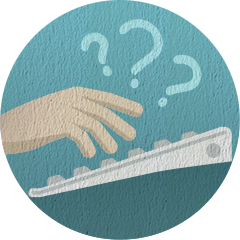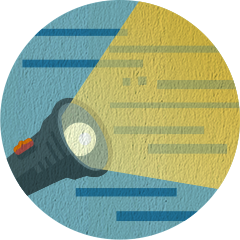How to Fix Electric Guitar Wiring
-
-
Answer:
So you take out your electric guitar to play one day, plug in the cable, turn your amp on and ... nothing. You check the inputs on your amplifier with another instrument, and they work just fine. Something is wrong with your guitar. A frustrating problem, to be sure. Before taking your guitar in for expensive repairs, there are some relatively simple steps you can take to isolate and fix the most frequent problem with electric guitars: the wiring. This is a diagnostic and repair project you can attempt yourself with limited electronics knowledge, some basic tools and patience. Difficulty: Moderately Challenging Things You'll Need Soldering iron Lead-free solder Wire cutters Wire stripper or pocket knife Electric guitar Small Phillips screwdriver Dish or bag for loose screws Instructions Find a clean, well-lighted surface free from dust. Place your guitar in a position where you can easily access the main body cavity, where the wiring you will fix is located. Depending on your model of guitar, this will either be under the pickguard, such as on a Fender Stratocaster, or behind a removable panel on the back of the guitar, such as on Les Paul models and their clones. Zero in on the main body cavity and go to work with a small Phillips screwdriver, being careful not to lose or strip any of the screws. If your guitar's main body cavity is under the pickguard, loosen and remove all the strings. This is often not necessary to remove the pickguard itself, but once you get inside, those strings will surely get in the way of what you are doing. After every screw has been removed and set aside, carefully remove the panel covering the main body cavity. Run your fingers along each of the wires slowly and carefully. If your guitar has simply stopped responding, or doesn't produce any sound when switched between certain pickups, the problem can be in a few different places. The most likely culprit is the wiring headed toward the instrument cable input. These wires can easily become broken or twisted out of place as the guitar is moved and cables are often quickly pushed in and out, or twisted around. The same goes for your volume and tone pots. If the pots themselves have gone bad, more intensive repairs are necessary, which are best left to a professional. But it is likely that the problem will simply be a wire that has broken free at one end from its intended connection. Completely remove any portion of the wire that is hanging onto its contact. Pull it free if it is still partially hanging on, but be very careful because these wires are very delicate. Use your wire cutters to cut off a small portion of the wire that has become broken or frayed, until there is no metal sticking out from within the wire's plastic casing. Be careful not to snip off so much of the wire that it will no longer reach its target. You are usually given a good length of wire to spare. Use a wire stripping tool, or a pocket knife if you do not have a wire stripper, to strip about 3/4 inch of the plastic casing protecting the wire. This is about the time you should plug in your soldering iron, and have lead-free solder at ready while the soldering iron heats up. While stripping the wire, especially if you are using a blade, make sure not to cut the very fine threads. If these become scored or uneven, your problem will likely come back. Wrap the exposed wire carefully around its contact a couple of times. Wrap it tightly so that it holds in place on its own, but make sure there is enough slack so that it is tension-free. Your soldering iron should be hot enough by this time. Hold the soldering iron physically touching where the wire connects to its contact on your guitar (don't worry, it will not damage these harder metals), lightly touch a strip of lead-free solder to the tip of the iron. Touch the solder to the iron, not the other way around; it is easier to control this way. Wait until the solder heats up enough that it starts to flow, and let the soft, hot metal run around the wire and its contact, until you have a nice little glob that nearly covers the whole area. You have to work quickly here. Set the solder down, and apply the iron directly to the bit of solder now covering the wire. You just want to touch it there for a second, until it runs all over the contact, completely covering the contact and the tip of the wire. If there is not enough to cover, take your stick of solder out and flow a little more into place. Set your soldering iron down on a surface where the tip can sit free in the air, then let the hot metal cool down hard. Leave it for several minutes before you attempt to move anything around. Carefully plug a cable into the guitar's instrument cable input and into an amplifier. The idea is to test out your repair to see if you have isolated the problem, before you start closing things back up. If you get a tone and your guitar has full functionality again, give yourself a pat on the back. You have fixed the problem and saved a good bit of money in the process. If not, carefully search for any more broken or frayed wires. If there is none, you will likely need to take your guitar into a professional, as further repairs are beyond the scope of the average hobbyist. Replace the main body cavity's covering, screw all the screws into place, and rock on. Tips & Warnings Warning: If you have not used a soldering iron before, make sure you read up on it enough to have a good idea on the concept of what could potentially be a dangerous tool.
Jesse Sears at eHow old Visit the source
Related Q & A:
- How good is Kona electric guitar?Best solution by Yahoo! Answers
- What is a good electric guitar for beginning guitar player?Best solution by Yahoo! Answers
- What is the best hollow body electric guitar under $600?Best solution by Yahoo! Answers
- How to fix the problem with electric on Honda accord?Best solution by Yahoo! Answers
- What's a good jazz electric guitar?Best solution by Yahoo! Answers
Just Added Q & A:
- How many active mobile subscribers are there in China?Best solution by Quora
- How to find the right vacation?Best solution by bookit.com
- How To Make Your Own Primer?Best solution by thekrazycouponlady.com
- How do you get the domain & range?Best solution by ChaCha
- How do you open pop up blockers?Best solution by Yahoo! Answers
For every problem there is a solution! Proved by Solucija.
-
Got an issue and looking for advice?

-
Ask Solucija to search every corner of the Web for help.

-
Get workable solutions and helpful tips in a moment.

Just ask Solucija about an issue you face and immediately get a list of ready solutions, answers and tips from other Internet users. We always provide the most suitable and complete answer to your question at the top, along with a few good alternatives below.